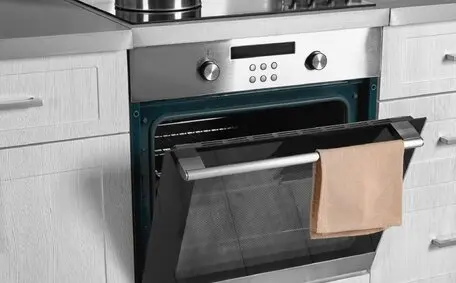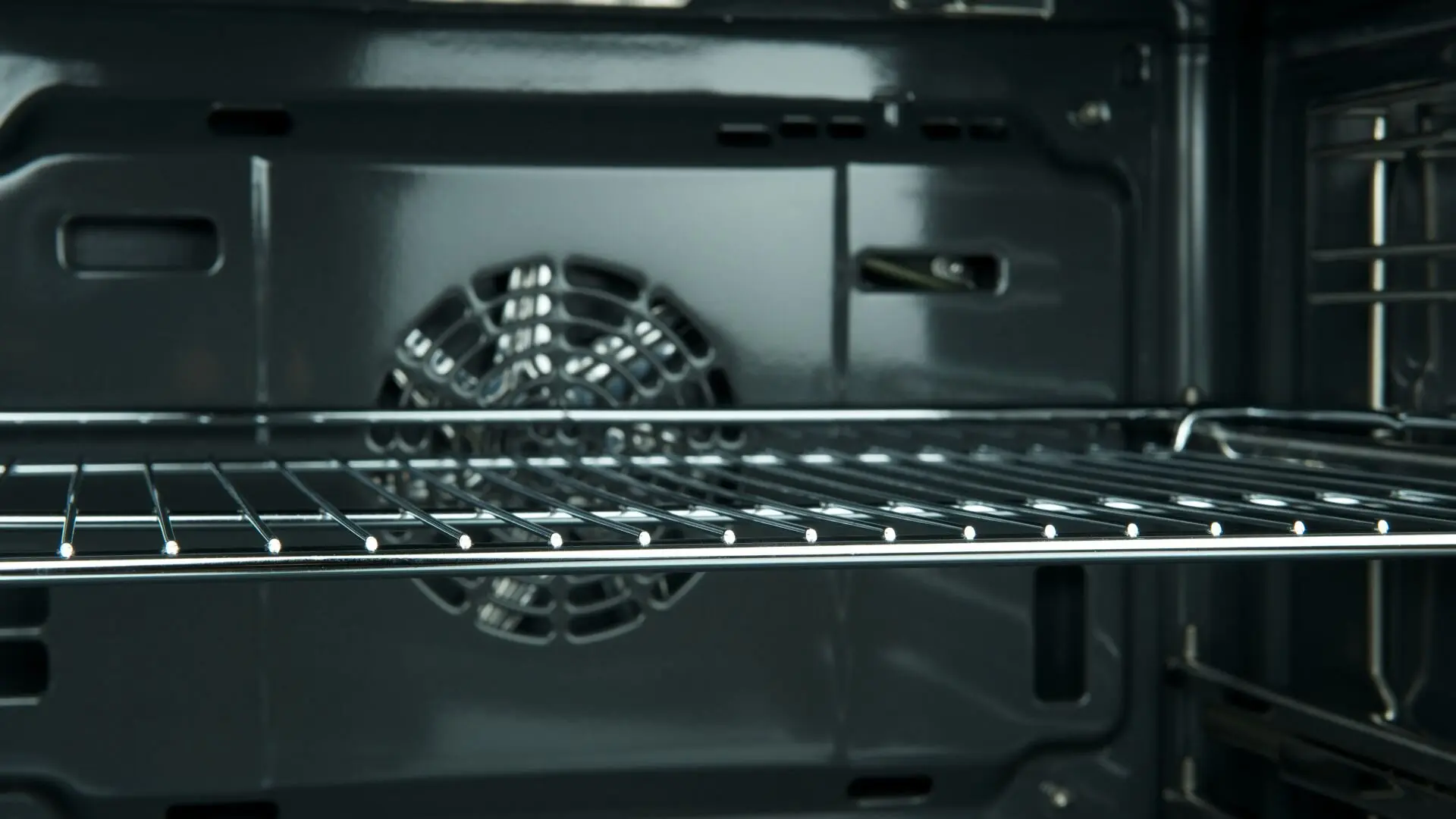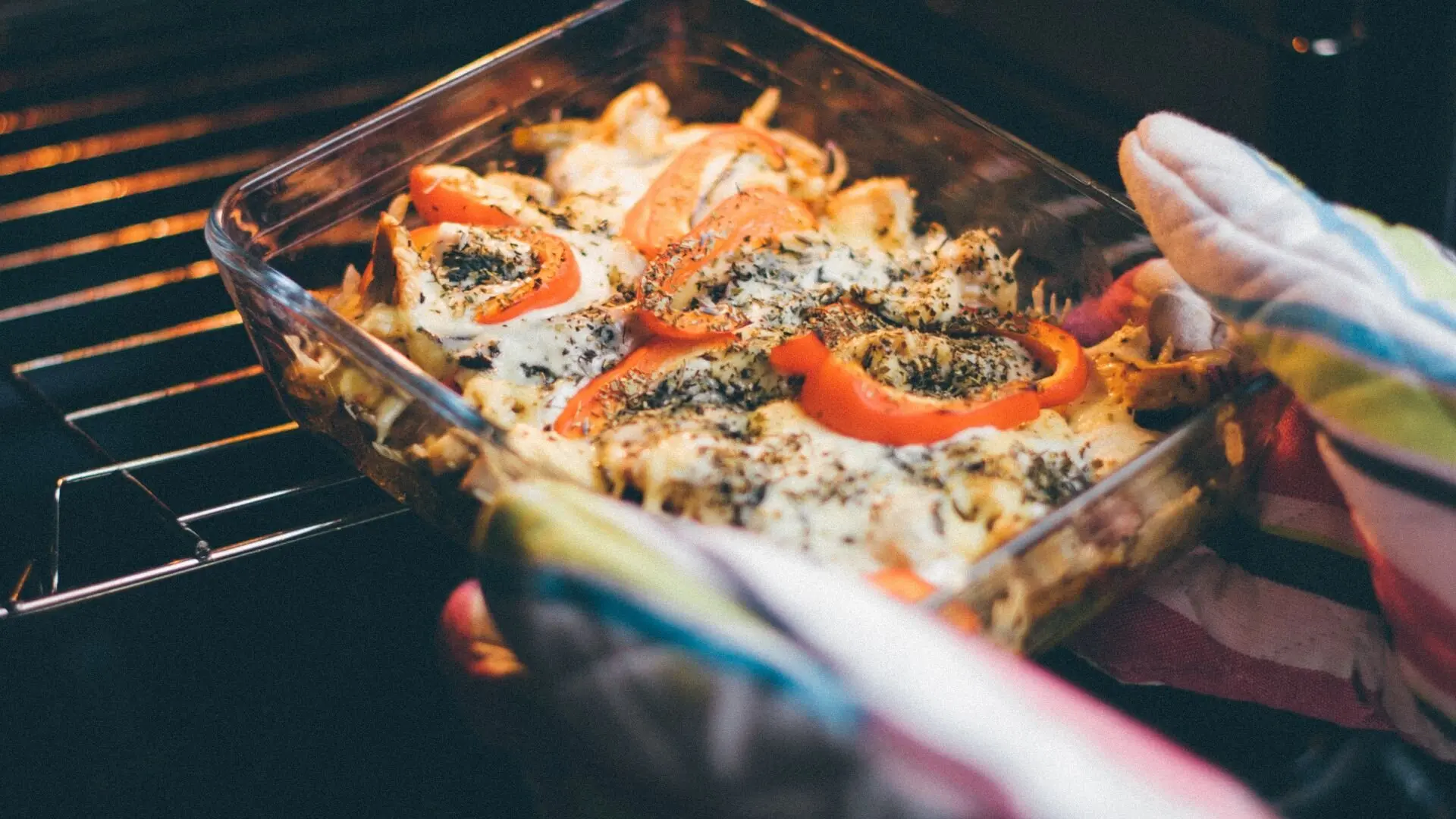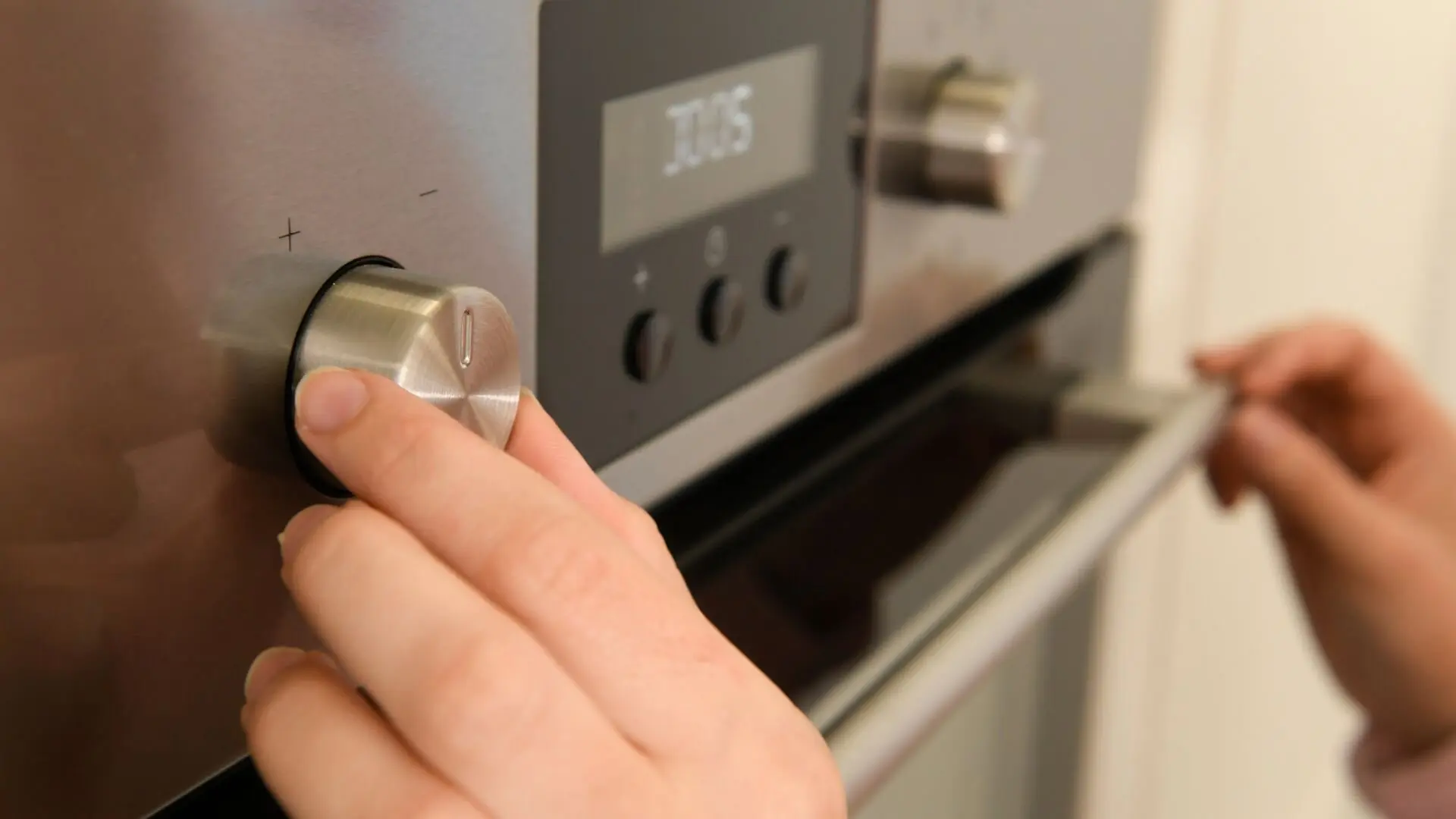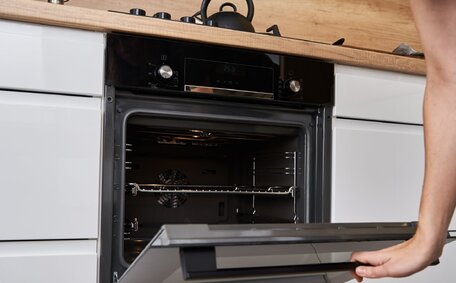Ripping out the old cabinets and planning your dream kitchen is exciting! But amidst the countertop swatches and sink debates, one crucial decision can easily overwhelm you: choosing your new oven.
The oven truly is the centrepiece of any kitchen, shaping the way you cook, bake, and entertain. With countless options like freestanding ovens, wall ovens, and various styles ranging from traditional gas to high-tech steam models, making the right choice might seem overwhelming.
No need to stress; this guide is here to help you make a savvy choice! We’ll explore the different oven types like gas, electric, and combo models, going over their pros and cons and nifty features like fan-forced cooking. We’ll consider how your cooking style and daily life play a role in whether you need a single or a double oven powerhouse.
This guide also examines your kitchen space for a freestanding oven, or maybe a built-in model under the countertop would fit your setup better. We’ll dive into how your oven choice contributes to your kitchen’s design – because let’s face it, a chic stainless steel finish can really pull the room together!
By the end, you’ll be confident in choosing the perfect oven for your new kitchen that complements your cooking style, budget, and overall kitchen aesthetic.
Considerations for Choosing Kitchen Appliances
When planning a kitchen renovation or selecting new appliances, it’s important to consider both the functionality and fit of your major kitchen appliances. The fuel type and configuration of your cooking appliances should align with your cooking habits, kitchen layout, and lifestyle to ensure your home is equipped to meet your needs. Here, we delve into two crucial aspects: the choice between gas and electric appliances and between a range or wall oven configuration.
![2024 05 Inside Oven Oven]()
Fuel Type: Gas vs. Electric
When picking kitchen appliances, it’s crucial to know the fuel type for your cooktop and oven. Gas and electric are the main choices, each offering unique benefits and challenges, suited to different cooking styles and kitchen designs.
Gas ovens and cooktops are loved for their precise temperature control, a feature that culinary enthusiasts can’t resist. They heat up instantly, and you can see the flame to adjust it perfectly for any recipe that needs specific heat settings. But, installing gas appliances can be pricey if your home lacks a gas line. Plus, they need regular check-ups to keep the gas lines in top shape.
Electric ovens, on the other hand, tend to provide more even heat distribution, particularly those that are fan-forced. They are generally easier to clean and maintain, with a smooth cooktop surface and fewer parts exposed to cooking spills. Electric cooktops and ovens might also be more cost-effective upfront and are considered safer since they don’t involve open flames. However, they might not offer the same temperature control speed as gas models, which can be a drawback for some home chefs.
Combination ovens that feature gas and electric functionality are available for those looking for versatility. These allow you to enjoy the benefits of both types, though at a higher cost and potentially higher maintenance needs.
Configuration: Range vs. Wall Oven
Choosing the right kitchen appliances also involves considering the configuration that best suits your kitchen layout and your lifestyle. The two main configurations are the freestanding range and the wall oven, each offering distinct advantages depending on your space and cooking habits.
Ranges combine a cooktop and oven in a single appliance, making them ideal for smaller kitchens where space is at a premium. This configuration can also help maintain the traditional aesthetic of your kitchen while providing all the necessary cooking functions. Their all-in-one nature often makes ranges less costly than purchasing separate cooktops and ovens.
Wall ovens installed at eye level provide ergonomic comfort, sparing you the need to bend repeatedly. This is a big plus for anyone with back issues or those who bake often. Having separate wall ovens can increase your cooking capacity - a boon for large families or baking enthusiasts. Double-wall ovens take this a step further, letting you whip up multiple dishes at various temperatures at once.
As an additional note, countertop ovens serve as a supplementary option for those who require extra baking space or do not have room for larger installations. These are particularly handy during large gatherings or when preparing multiple courses.
Matching Needs and Budget
Selecting the right oven for your kitchen is a crucial decision, impacting both your culinary adventures and your budget. Here’s a guide to help you find the oven that ticks all the boxes.
![2024 05 Puttiing Meal In Oven Puttiing Meal Oven]()
Matching Oven Capacity to Your Needs
The first step is to consider the size of your oven cavity. Think about how much you typically cook for. Do you regularly prepare large roasts or family meals? If so, a larger oven might be necessary. Conversely, if you’re a single person or a couple who cooks smaller meals, a more compact oven could be the perfect fit for your kitchen.
Double Duty or Single Focus?
For those who love to bake or entertain, double wall ovens or even a combination oven cooktop might be ideal. These options offer the flexibility of two ovens in one, allowing you to bake a cake while roasting vegetables simultaneously. However, if you primarily use your oven for basic cooking, a single oven might be more budget-friendly.
Flexibility with Multiple Cooking Levels
The number of oven racks can significantly impact your cooking experience. More racks allow you to bake or roast multiple dishes at once, saving time and energy. Consider your usual cooking style when making this decision.
Temperature Control Matters
For baking enthusiasts, precise temperature control is paramount. Look for ovens with digital controls that offer a wide temperature range. This ensures consistent results, whether you’re mastering a delicate souffle or charring vegetables.
Faster, More Even Cooking with Convection Power
Convection ovens, also known as fan-forced ovens, circulate hot air throughout the cavity. This results in faster cooking times and more even browning compared to traditional electric ovens. While not essential for everyone, convection can be a valuable tool for busy cooks or those seeking restaurant-quality results at home.
Self-Cleaning
Self-cleaning ovens can significantly reduce cleaning time, a major perk for many. However, they tend to be more expensive than their non-self-cleaning counterparts. Consider your budget and how often you find yourself scrubbing burnt-on messes before making this decision.
Smart Connectivity
Smart ovens offer a range of features, from remote preheating to monitoring cooking progress via your phone. While convenient, these features might not be necessary for everyone. Think about how often you’d use these functionalities before investing in a smart oven.
Energy Efficiency: Saving Money and the Environment
When picking an oven, don’t forget to check its energy efficiency rating. Opt for models with high star ratings—they’ll help you save on electricity bills over time and create a greener kitchen.
Design Elements and Style
The oven you choose can be more than just a functional appliance – it can significantly impact the overall aesthetic of your kitchen. The finish you select plays a big role. Stainless steel offers a clean, modern look, while black stainless steel adds a touch of drama and sophistication. For a classic or minimalist kitchen, consider a crisp white finish that seamlessly blends in with your cabinetry.
The latest trend in oven design is integration. Integrated ovens disappear behind cabinetry, creating a sleek, uncluttered look that enhances the overall flow of your kitchen.
![2024 05 Turning Dial On Electrical Oven Turning Dial Electrical Oven]()
Planning for Installation and Use
During your kitchen renovation planning stage, don’t forget to factor in the dimensions of your chosen oven. Make sure it fits comfortably within your designated space, allowing for proper clearance around it.
If you’re opting for a gas oven, you’ll need to consider ventilation requirements. Gas ovens typically require an external exhaust fan to remove fumes and heat. Electric ovens, on the other hand, don’t require additional ventilation, but make sure your electrical wiring is compatible with the oven’s wattage.
For both gas and electric ovens, especially when dealing with new installations or rewiring, it’s crucial to consult a qualified electrician. They can ensure your oven is installed safely and according to regulations.
Peace of Mind with the Perfect Choice
When purchasing a new oven, consider the manufacturer’s warranty and after-sales service. A good warranty can provide peace of mind for unforeseen issues.
Choosing the right kitchen appliances goes beyond just functionality. The perfect oven can elevate your kitchen’s aesthetics, enhance its functionality for your lifestyle, and contribute to your overall enjoyment of your renovated space.
With a wide range of options available, from wall ovens and ranges to fan-forced ovens and even steam ovens, there’s sure to be an oven that perfectly complements your kitchen remodel and cooking style. The right choice comes down to considering your design preferences, cooking needs, and budget to find the oven that makes your kitchen truly your own.
Your Dream Kitchen Starts with the Perfect Oven
Picking the perfect oven for your new kitchen goes beyond just looks. Consider your cooking habits – are you a baker extraordinaire or a quick-meal master? Electric ovens offer consistent heat distribution, are ideal for baking, and boast many features like convection for faster cooking. Plus, electric ovens tend to be easier to clean than gas ovens.
No matter your needs, Bright Force Electrical can help. We’re passionate about creating dream kitchens, and our experts can guide you to the perfect electric oven for your lifestyle cooking. We offer oven installations, so contact us today to learn more about electric ovens and how they can elevate your kitchen renovation.
